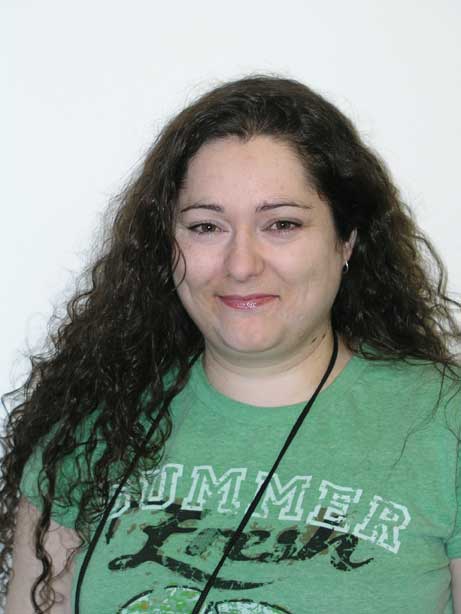Make-up artist turned forensic scientist Joanna Fraser
1 Oct 2010 by Evoluted New Media
Make-up artist turned forensic scientist – just how do you make the switch? Laboratory News finds out
Joanna Fraser is a PhD student and teaching assistant at the University of Dundee Abertay and has just been awarded the Winston Churchill Memorial Trust fellowship but she used to be a make-up artist! She gave up a life of glamour to study Access to Forensic Psychobiology at Dundee College before switching to Abertay University to study forensic science.
Laboratory News caught up with Joanna to find out a bit more about her PhD project and what the fellowship will mean for her work.
Tell us a bit about your PhD – what is vacuum metal deposition?
My PhD involves visualisation of fingerprints on fabric using Superglue fuming and Vacuum Metal Deposition (VMD) techniques.
The project came about when Scottish Police Services Authority (SPSA) Forensic Services Dundee and the Home Office approached Abertay University about the possibility of research being carried out in the recovery of fingerprints and DNA from fabrics. After some discussion it was suggested that I could carry out the work as part of my PhD studies.
The research has come about in part to investigate serious assaults and suspicious deaths where fingerprints, grab marks and/or push marks that might have resulted from a struggle or assault could be visualised on clothing. This could lead to a positive identification, an area to touch swab for DNA or to help corroborate a sequence of events.
VMD is a technique used for visualising fingerprints on smooth non-porous surfaces such as plastics. It works by thermally evaporating metals under high vacuum causing a thin layer of metal to be deposited onto the sample. The resulting fingerprint is usually a negative of the original print – ridges appear as the background colour and valleys the colour of the metal used.
Superglue fuming is also used for visualising fingerprints on similar surfaces. It produces a positive print forming a white polymer when it comes into contact with certain constituents of the fingerprint residues on the ridges. If the substrate surface is of a light colour a fluorescent dye such as basic yellow 40 (BY40) may be used to allow the polymer to be seen.
You’re working with the SPSA Forensic Services & HOSDB – this must be really interesting. Tell us more:
I am working in close consultation with the SPSA Forensic Services Dundee and the Home Office Scientific Development Branch (HOSDB) on all aspects of my PhD. This allows me to glean knowledge and experience from those who have been working and researching in this field for many years. I find their help invaluable and I would not be able to complete my PhD without the help and support of these two establishments and their employees.
You’ve been awarded the Winston Churchill Memorial Trust fellowship – what does this mean for your work?
The fellowship will allow me to visit world-renowned experts in universities and police departments in America, Canada and Australia. Hopefully, I will gather invaluable knowledge and experience, which in turn will aid me in my studies, my role as a teaching assistant and potentially open up new areas of research which may play a part in the future of forensics.
It will allow me to see, first hand, the ways that other forensic labs deal with similar evidence and hopefully the networking opportunities will lead to collaborations and further advances in this area. I will also be attending and presenting at the 20th International Symposium on Forensic Sciences in Sydney in September. Although it’s a bit scary to be speaking in front of a large group of forensic experts, it will allow me to demonstrate the importance of this work as a method that could be implemented operationally worldwide.
All this would not be possible without the help, support and funding I am receiving from the WCMT. Therefore I am extremely grateful and would urge others to apply to the Trust so they too could have the opportunity to take part in a “life changing trip”, just like me. (http://www.wcmt.org.uk/)
Why forensics? What drew you to this area of study in the first place?
[caption id="attachment_23481" align="alignright" width="150"] Joanna Fraser[/caption]
Joanna Fraser[/caption]
I have always had an interest in forensics, why things happen and how they occurred – basically solving the crime. My mum always tells me that the first job I said I wanted wasn’t to be an astronaut or pilot like most children, but to be “Quincy” – the crime solving pathologist. I suppose I was influenced by the “CSI effect” before it was even considered by the media. I was just intrigued as to how this man could look at a dead body and work out all manner of things, such as how they had died, how long ago and who committed the crime. However, at school I was steered towards the Arts and ended up training as a make–up artist. This is a career that I enjoyed, but I always felt the callof forensics. So when a degree started at the University of Abertay Dundee I thought it was perfect timing and left the world of make-up behind. I graduated in 2006 with a first class honours degree and was lucky to be appointed at Abertay as a Teaching Assistant and PhD student.
Forensics is a field that is always developing and expanding, therefore it will continually keep my interest and I will always be learning new things, which I can pass on and utilise in my studies.







